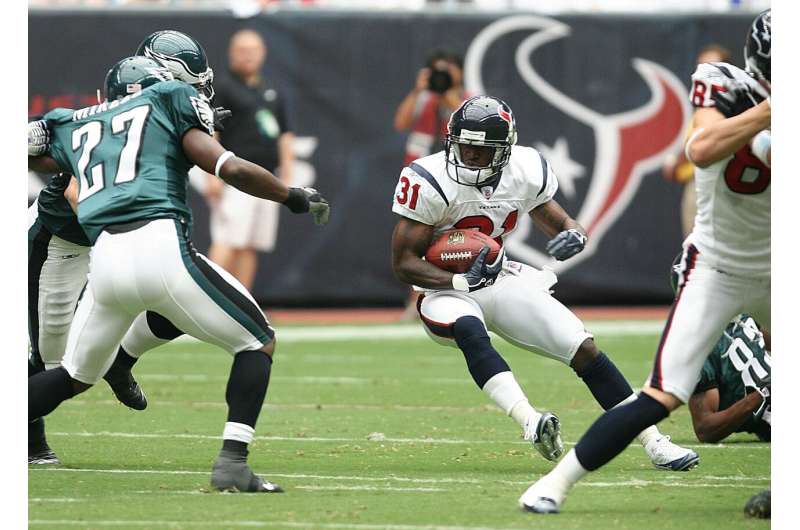
Does a football player’s number of concussions drive the risk of developing chronic traumatic encephalopathy (CTE)? In a new study of 631 deceased football players, the largest CTE study to date, scientists found that the number of diagnosed concussions alone was not associated with CTE risk. Instead, football players’ odds of developing CTE were related to both how many head impacts they received and how hard the head impacts were.
The study, conducted by researchers at Mass General Brigham, Harvard Medical School, and Boston University (BU), was published in Nature Communications. It used an innovative new tool called a positional exposure matrix (PEM) that synthesized data from 34 independent studies to estimate the number and severity of football players’ head impacts over their careers.
“These results provide added evidence that repeated non-concussive head injuries are a major driver of CTE pathology rather than symptomatic concussions, as the medical and lay literature often suggests,” said study senior author Jesse Mez, MD, MS, Associate Professor at the BU Chobanian and Avedisian School of Medicine and Co-Director of Clinical Research at the BU CTE Center.
The new data could provide football with a playbook to prevent CTE in current and future players, according to researchers.
“This study suggests that we could reduce CTE risk through changes to how football players practice and play,” said study lead author Dan Daneshvar, MD, Ph.D., Assistant Professor at Harvard Medical School and Physician at Mass General Brigham affiliate Spaulding Rehabilitation. “If we cut both the number of head impacts and the force of those hits in practice and games, we could lower the odds that athletes develop CTE.”
The researchers used the new PEM tool to estimate the cumulative number of head impacts, and the cumulative linear and rotational accelerations associated with those impacts, based on the levels and positions athletes played throughout their football career. The study found that cumulative repetitive head impact (RHI) exposure was associated with CTE status, CTE severity, and pathologic burden in the football players. Additionally, the study found that models using the intensity of impacts were better at predicting CTE status and severity than models using duration of play or number of hits to the head alone.
The PEM is a valuable tool that researchers can utilize to improve studies on risks of football play. By using the PEM in future studies, researchers could look at other potential effects of RHI exposure beyond CTE to gain a better understanding of the specific types of RHI that are most likely to cause these problems.
“Although this study was limited to football players, it also provides insight into the impact characteristics most responsible for CTE pathology outside of football, because your brain doesn’t care what hits it,” said Daneshvar. “The finding that estimated lifetime force was related to CTE in football players likely holds true for other contact sports, military exposure, or domestic violence.”
A limitation of the study is that it utilized a convenience sample of football-playing brain donors who tended to have higher exposure to RHI than the general population of football players. However, a substantial number of donors had lower exposures, so the findings can still be extrapolated to most football players.
More information:
Daniel H. Daneshvar et al, Leveraging football accelerometer data to quantify associations between repetitive head impacts and chronic traumatic encephalopathy in males, Nature Communications (2023). DOI: 10.1038/s41467-023-39183-0
Journal information:
Nature Communications
Source: Read Full Article